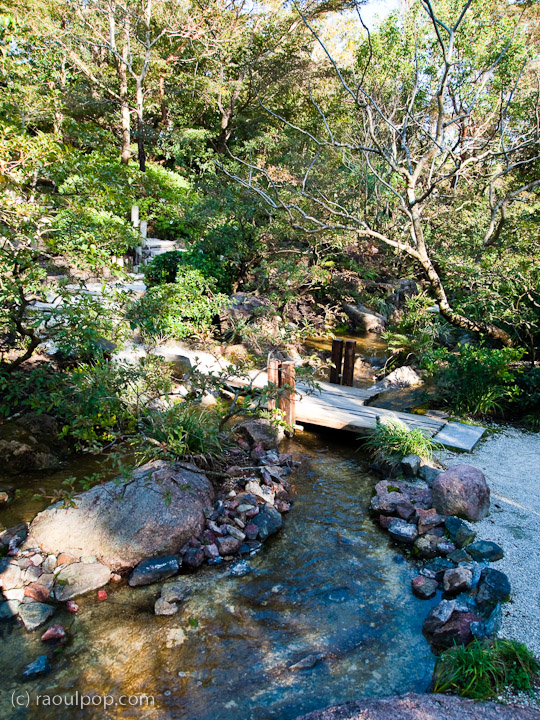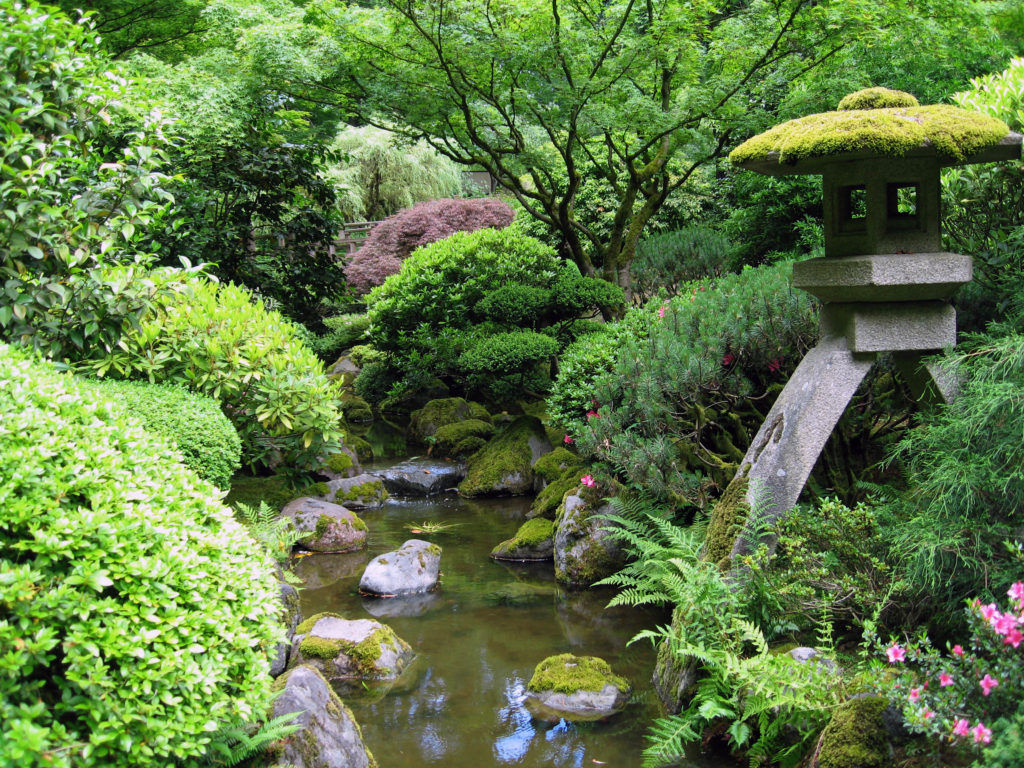Within the theory and practice of garden design exists the concept of ‘patterns’. Patterns are not rules, but general guidelines suggesting how people and a setting can be ‘in sync’. Some patterns suggest ways in which a green space can provide healing benefit to visitors. For example, the pattern ‘Wondering in Small Spaces’ describes how even small green spaces can be designed in such a way to evoke the imagination (mental wondering) or provide viewpoints where visitors survey the garden’s extent, feeling secure and inspired. Consider an experience in a Japanese garden:
The mind wonders when the eyes perceive a landscape filtered through the lacy leaves of a Japanese Maple. Intimate, smooth paths wind around a bend into a hidden nook. A bamboo water fountain clanks as the weight of the water rolls through it.

Japanese garden design patterns exhibit inherent knowledge and techniques to evoke a sense of wonderment, exploration and tranquility within the human experience. A desire to explore every distinct section and a call to pause and reflect are hallmarks of Japanese garden design. In recent years, researchers and landscape designers in Japan, North America and Europe are collaborating to understand human perception and health response within Japanese gardens.
The history of Japanese garden design extends well beyond Western garden design and contemporary discussion of designing nature spaces for health. Garden design arose in Japan in the 7th century, borrowing ideas from Chinese design. For hundreds of years, gardens were built for aristocrats, and more recently for Zen Buddhist meditation practice. Not until the 16th century did ‘tea garden’ design develop for use in everyday life. The Japanese tea ceremony has been practiced by all people, representing a way of thinking, being and perceiving. Japanese garden and tea house design are similar in their design and ideas.

In the last decade, researcher Goto and colleagues have asked “How does such a garden affect contemplation differently from other types of landscapes?” Their 2013 study measured the mood, aesthetic preference, and heart rate of observers who viewed three different landscape spaces – a tea garden, a French garden, and a few acres of a campus forest. Mood was assessed using an established protocol before and after viewing the spaces. Heart rate was assessed using a portable fingertip pulse monitor before and during the viewing. The findings support further research into Japanese garden design. The tea garden evoked greater responses in all outcome measures. Exposure to the tea garden had a soothing effect on viewer’s mood and after a delay, a lowered pulse rate.
This past March, the North American Japanese Garden Design Association held their biennial conference in Florida, themed ‘Japanese Gardens as Places for Wellness and Transformation’. Japanese gardens are found in at least 53 countries, and North America alone has more than 250 gardens. Their role in community health and well-being can be profound. The keynote address, “The Cognitive Science and Healing Characteristics of Japanese Gardens”, given by Chiba University professor Eijiro Fujii, summarizes research “on the visual effects of landscape tree forms, the relaxing effect of green space and the physio-psychological effects of Japanese gardens. The connection between eye movement and landscape tree forms, and the healing characteristics of plants and green spaces are established through the analysis of encephalograms. Physio-psychological responses to characteristic components of a Japanese garden are analyzed through semantic differential method, eye tracker and near-infrared spectroscopy.”
Other presentations from the March conference hint at the emerging science and design analysis of Japanese gardens and health. Topics include eye movement, EKG measurements, student well-being in U.S. universities, Japanese gardens as civic space and a tool for meditative experiences, partnering with health practitioners, and practices to bridge the historic and future possibilities of Japanese gardens within communities.
The design decisions made by Japanese masters beginning in the 7th century attests to the rooted knowledge of human perception and design patterns to encourage self-reflection and pause. Jumping forward in time, but similar in spatial components, visitors to Florida’s public Morikami garden can experience historic garden design for the new millenium. In 2015, a research and community wellness program offered a year of unlimited “Strolls for Well-Being”. Encouraging visitors to slowly stroll through a landscape is also offered this year in Washington State’s Bloedel Reserve.

